We are often asked “What is Landfill Gas”. On this page we provide an explanation the meaning of “landfill gas”, and a lot more. We aim to give readers a grounding in the subject of landfill gas, and its uses.
Landfill gas is a complex mix of different gases created by the action of microorganisms within a landfill.
What is Landfill Gas – the Answer
It is created in landfills when the organic material decomposes, and comprises a mixture of methane and carbon dioxide, with a number of other trace components. Hydrogen sulphide may be present. That is a dangerous gas if inhaled, and smells like “bad eggs”. Landfill gas also often contains appreciable concentrations of hazardous volatile organic compounds (VOCs) (CARB, 1990, Allen et al.).
The use of landfill gas (LFG) is considered a green fuel source.
That's because it offsets the use of environmentally damaging fuels such as oil or natural gas, destroys the heat-trapping gas methane. And, the gas is generated by deposits of waste that are already in place.
Biogas does not contribute to increasing atmospheric carbon dioxide concentrations if:
- it is burnt in a flare, or
- used for its energy (utilized).
That's because after burning (combustion) the methane, (which is far more prone to cause atmospheric warming than the products of its combustion), is not released directly into the atmosphere. It is converted into carbon dioxide, and water. These are of no real harm, as in the case of landfill methane, it is classed as being derived from an organic source with a short carbon cycle.
The Potency of Landfill Gas to Warm Our Planet When Compared with Carbon Dioxide
If landfill gas is allowed to escape to atmosphere, the methane contained within it is a powerful “greenhouse gas” (gas which tends to warm the globe when in the atmosphere).
As a greenhouse gas it has until recently been estimated as being at least 21 times more so than carbon dioxide. That was based upon the molecular physics of the methane molecule. Recently, estimates of the damaging heat effect of methane have been substantially raised.
Some might say they disagree because there are still many websites around the web that adhere to the old lower factor. Why should they believe a higher estimate. On this one the devil is definitely in the detail, but suffice to say that for our lifetimes we should be considering the higher figure to be the most correct.
The Benefits of Burning Landfill Gas
The benefit of the destruction, or utilization, of this landfill gas is that it prevents the methane in the gas from escaping into the atmosphere as a greenhouse gas. The resulting carbon dioxide is much less damaging, as a greenhouse gas (GHG) raising global temperatures.
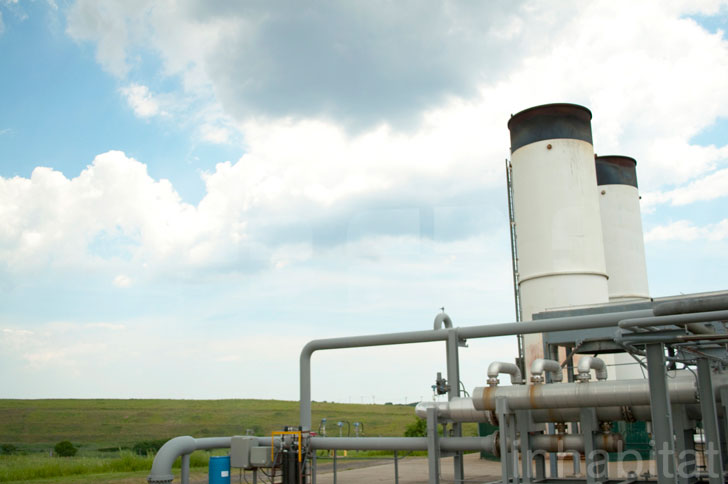
The term “landfill methane” is a term used to describe biogas, but we think it is deceiving. If used instead of the term “landfill gas” it implies that landfill gas is only methane. It isn't!
As our readers now know. Only about half, or perhaps up to 70%, is methane. Methane (CH4) is a colorless, odorless and highly explosive gas. Pure methane burns clean. Many of the world's population use it every day in the form of the natural gas piped into their homes.
What's Left After Burning Natural Gas or “Purified Landfill Gas” (Biomethane)
All those that have a mains gas connection know that natural gas is essentially the same as pure methane. It burns really clean. Once burnt the result is just water and carbon dioxide. In other words, burning natural gas (both renewable or non-renewable types) causes no more than:
- a rise in humidity and a
- harmless rise in carbon dioxide in our kitchens,
while the gas-oven and/ or gas ring (hob) is turned-on.
However, it would be better if it was left in the ground because the additional carbon dioxide still does have a global warming effect.
Landfill Gas Extraction Systems
Landfill gas can be extracted from wells within the waste of landfills, and collected by sucking it through pipes to a single LFG equipment location (or compound). The LFG compound is usually at a conveniently accessible place, at the side of the landfill.
[simpleazon-image align=”left” asin=”B004U7FXQK” locale=”us” height=”160″ src=”https://images-na.ssl-images-amazon.com/images/I/41yznyY1nXL._SL160_.jpg” width=”107″]That's where a flare is located to convert the methane (CH4) to Carbon Dioxide. This occurs within the flame and it is this which reduces the “greenhouse gas effect” of the discharge.
However, it is much more environmentally beneficial to use the biogas and sell the energy, instead of just burning it in a flare. In fact, utilization of the biogas to produce electrical energy once it has been collected is very simple. It's usually profitable, as well. With the proviso being that the landfill yields enough biogas, at a low oxygen concentration.
Where landfill gas utilization takes place the electrical generator (gas engine) is most often also sited next to the flare.
What is the Best Way to Use LFG?
In brief, if you ask what the best way to manage landfill gas is, the answer is along the lines of “before you do anything with it, filter out the toxic contaminants and treat them with a non-burn technology.
Landfill operators have developed several uses for landfill gas. Until recently the vast majority of landfills which use the landfill gas collected to generate electricity from it and sell the power into their local power grid.
In the US, apart from a recent change in national policy requiring collection and flaring energy prices tend to be lower than elsewhere. The problem for US landfill site operators, is that although the sale of electricity can be very profitable in many countries, it may not be in the US.
Low Electricity Tariffs in the US is a Big Factor Against Profitability of LFG Utilization in the US
With the comparatively low electricity tariffs in the US, and a lack of any federal US incentives for renewable energy production, the cost of constructing the landfill gas collection system, and buying the generators etc., can easily outweigh the savings.
Until the mid-2000s the best way to use landfill gas was almost always to produce electricity and sell the electric power. That was the case, unless a nearby factory could make use of the gas within their production process needs.
Now, with the availability of off-the-shelf Combined Heat and Power Units the best use of landfill gas for many landfills is to use it to make both electricity and heat. This is achieved in a Combined Heat and Power Unit (CHP)). And, either generate electricity on the landfill for export, or purify the biogas to a high standard and inject it into the local natural-gas grid.
To Upgrade Landfill Gas (To Make Biomethane) or Generate Power to Export to the Local HV Electricity Distribution System?
The best use of LFG might be assessed today, as follows:
- where access is available for a power outlet (grid supply) to a nearby high voltage line as an existing electrical connection, and can be installed at minimal cost. This can be the best use, especially if a local farm or business nearby is available to pay for a supply of heat. Purification provided for the gas prior to its use in the generator units, would be at a low-level simply to reduce corrosion.
- where no access to a high voltage power line for the supply of electrical power is available, or installation would be expensive, full purification is likely to be the best use. Purification applied is to full natural gas standards making the LFG into “biomethane” suitable for vehicle use. Compression on-site is then applied and the landfill operator will then be able to use the renewable Compressed Natural Gas (CNG). For example, it can be used as fuel for the landfill vehicles and often also for fueling refuse collection and other fleet vehicles.
LFG and Old Landfills
Landfill gas production peaks soon after, or at the time when the landfill is completely filled, and reduces gradually thereafter.
On old landfills, landfills in the aftercare-period, and landfills taking in wastes with a low intrinsic gas formation potential active extraction in combination with utilization, or flaring, of landfill gas eventually cease to be viable.
A return to simple flaring to maintain a negative inward gas pressure is then inevitable.
Recent developments in low calorie methane landfill gas combustion flares, have led to a reduction at the threshold in which landfill gas can still be flared, or utilized. This is a welcome development. It will further reduce the amount of methane which will unavoidably be released to the atmosphere adding to climate change problems.
As things stand a significant, and possibly up to 50%, proportion of the landfill gas will escape:
- Before landfill gas extraction can be installed and operated, and:
- After each landfill ceases to produce landfill gas of a high enough volume and calorific value, for gas extraction for EfW power generation to continue.
Trace Gases in Landfill Gas from a Typical United Kingdom Municipal Solid Waste Landfill
Trace gases in UK landfill gas include a mix of VOCs, hydrogen sulfide, nitrogen, and others. These gases arise from the breakdown of organic waste and microbial actions. Over 500 trace components have been identified, including hydrogen sulfide, vinyl chloride, carbon disulfide, and BTEX compounds…
Is Your Landfill Site Ready? Assessing When to Install Gas Flares & Landfill EfW Systems
The urgency for compliance with the COP29 methane pledge means waste managers must act immediately. Gas flares are mandatory for low volumes, while EfW systems transform hazards into valuable energy. Install EfW when LFG is significant and steady to secure compliance and profits ahead of deadlines…
What is Landfill Gas Used for: Exploring Its Practical Applications
In a quiet corner of Yorkshire, a local council recently transformed a decades-old rubbish site into an unexpected power source. Beneath the grassy mounds lay a hidden network of pipes capturing invisible emissions from rotting food scraps and garden clippings. This methane-rich mixture now fuels nearby factories and heats over 2,000 homes – turning yesterday’s […]
US Landfill Gas Resources: A Booming Green Energy Sector
Untapped U.S. Landfill Gas Resources are an Opportunity for Green Investment The American landfill gas (LFG) sector has seen a big change in recent years. It's now a key player in the country's biogas world. Even though it's only 23% of over 2,500 biogas systems now installed nationwide, it captures 72% of all biogas by […]

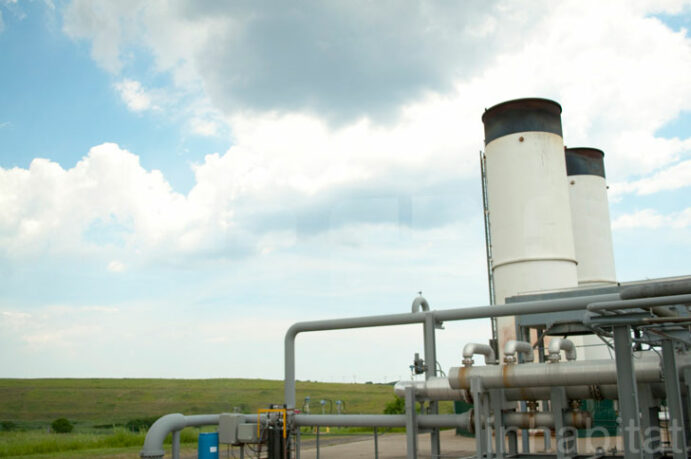


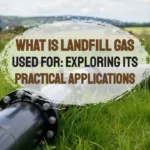
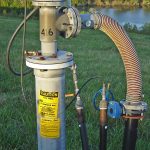
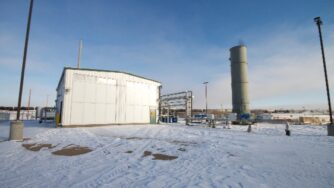
![A landfill collection system shown in 3D cut-away style. By US EPA - LMOP (US EPA - LMOP) [Public domain], via Wikimedia Commons.](https://landfill-gas.com/wp-content/uploads/2018/11/512px-Landfill_gas_collection_system-334x188.jpg)

Is it possible that landfill sites can be converted to agricultural land?
I hope someone could help me with this,cause its my thesis proposal. THANK YOU!
Yes. it is possible to revert them to grazing land. Crop-land is possible but requires a deeper more expensive capping generally.
It was interesting when you explained that landfill gas systems prevent methane from escaping into the atmosphere. It makes sense that landfills would want to use a system like this because it would help keep the local environment healthy. It would be interesting to learn more about what happens fumes that area created by decomposing waste.